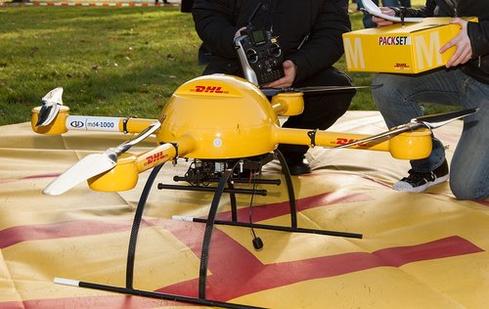Consumers think drones are ready for prime time. But can the devices live up to the hype?


9 Most Tech-Savvy Presidents
9 Most Tech-Savvy Presidents (Click image for larger view and slideshow.)
Consumers are ready for drones to ship goods to their houses but, sadly, it looks like drones aren't quite ready for us.
An upcoming Walker Sands report, "Reinventing Retail: What Businesses Need to Know for 2015," covers multiple changes in the habits and desires of consumers, including how consumers feel about emerging technologies such as drone delivery.
A whopping 88% of the 1,400 consumers surveyed for the Walker Sands report said they would trust a drone to deliver at least one type of package straight to their door. Let's put that number in perspective. You can't get 88% of people to trust scientists to believe the Earth goes around the Sun. Only 74% of people believe that. But 88% will accept a flying robot on their property, despite the fact that the No.1 user of drones to this point has been the military.
The Walker Sands report further noted that over 74% of respondents are willing to trust drones to deliver books, and 73% would trust them with clothes.
In an interview with InformationWeek, Maria Haggerty, CEO of Dotcom Distribution, explained that such drone acceptance occurs because consumers really don't care about the "how," but only about the "what." And the what, in this case, is faster delivery of products to their doors.
Despite the fact that 66% of those polled for the Walker Sands report believe they will see a drone deliver a package within five years, Haggerty is skeptical. "I don’t know if [drone delivery in five years] is a reasonable thing to expect, but it is all a step in a process," Haggerty said, "Whether it is a drone or something we can’t imagine, like a George Jetson-like spaceship, the problem we're talking about is getting something from point A to point B. And we will figure that out. The technology is already there. It is about driving the price down."
[ What will the FAA's new drone rules change? Read: FAA Rules Should Spur Drone Experiments. ]
Haggerty went on to point out that, basically, most products are already within easy proximity to most consumers. Think about how few things you couldn't buy for yourself in an hour if you wanted them. Instead of the consumer going to get them, the process is simply about bringing the goods to the consumer. The technological question is really about unused resources. "Think about how many trucks are deadheading from point B back to point A to pick up another load," said Haggerty. "We’re not utilizing resources efficiently."
Ultimately, in order to lower prices, packages need to be consolidated so it costs less to deliver more packages. That's the opposite of the drone in many ways. The view of the drone is a fleet of tiny robots delivering a package or two at a time. You aren't consolidating time and energy costs. You are separating them.
That's even before we get to major obstacles such as the FAA reporting new rules that say drones need to stay within the line of sight of the operator in order to be used commercially. Though, interestingly, Haggerty thinks that is less of an obstacle than it might appear. As she points out, the air traffic control problem wasn't solved before the Wright Brothers. It was solved after they made it necessary.
So while consumers are ready for drones, the drones might not be ready for us. What is an enterprise to do? For one, it can make a better use of existing resources. As Haggerty said, the technology is there. The goods are close. "The milkman used to deliver every day."
Perhaps we'll see an Uber for delivery trucks. Or someone will continue to use technology to improve on efficient use of routing packages. There is a business opportunity in taking our current logistics solutions and improving them.
Or maybe 3-D printing will be the next drone. Maybe the reality is that we will perfect the replication of products in our homes before we solve air traffic control for drones.
If you are a retailer or a logistics company (or just someone that has to move a lot of stuff around) remember the issue is moving things from point A to point B. Consumers don't trust drones because they like flying robots buzzing their houses. They like drones because they like getting stuff fast. Solve that problem, and they won't care how you do it.
Attend Interop Las Vegas, the leading independent technology conference and expo series designed to inspire, inform, and connect the world's IT community. In 2015, look for all new programs, networking opportunities, and classes that will help you set your organization’s IT action plan. It happens April 27 to May 1. Register with Discount Code MPOIWK for $200 off Total Access & Conference Passes.
About the Author(s)
You May Also Like







